Can Breastfeeding Laws Change Anti-Breastfeeding Culture? Virginia Is About To Find Out
Caption: Virginia Governor Terry McAuliffe signs a bill into law on March 9, 2015 that will protect Virginia mothers who choose to breastfeed in public after July 1, 2015. Currently, and until the law goes into effect, Virginia is only one of three states that does not protect breastfeeding mothers in public spaces. The Commonwealth’s current law only promises not to arrest nursing mothers for indecent exposure. Photo Virginia Governor’s Office.
Listen to Richmond mother, Kate Noon, explain the need for the new Virginia breastfeeding bill and its trajectory to become law.
Can Breastfeeding Laws Change Anti-Breastfeeding Culture?
Virginia Is About To Find Out
Until February 15, 2015, Virginia was one of three states not protecting a mother’s right to breastfeed in public. The newly passed bill protecting breastfeeding mothers in public ushers Virginia out of the dark ages when it becomes law on July 1, 2015, but will the legislated public health policy make a difference in a conservative Commonwealth with a notorious history of suppressing women’s rights and boasting a formula company dominated hospital culture – with only two WHO-UN and CDC certified Baby-Friendly hospitals?
This feature explores how other states are making breastfeeding the cultural norm with interviews with a variety of state coalition leaders. The history, current cultural challenges and creative efforts of other states seeking to normalize breastfeeding illustrate the potential impact of the new law as well as the challenges ahead.
A History Of Breastfeeding In Virginia: Grassroots Lactivists And Rose-Colored Glasses
“I can nurse in Virginia in public. Wow,” I read the cornflower blue card’s message before flipping to the back to read the messenger’s contact information: the Virginia Breastfeeding Task Force.
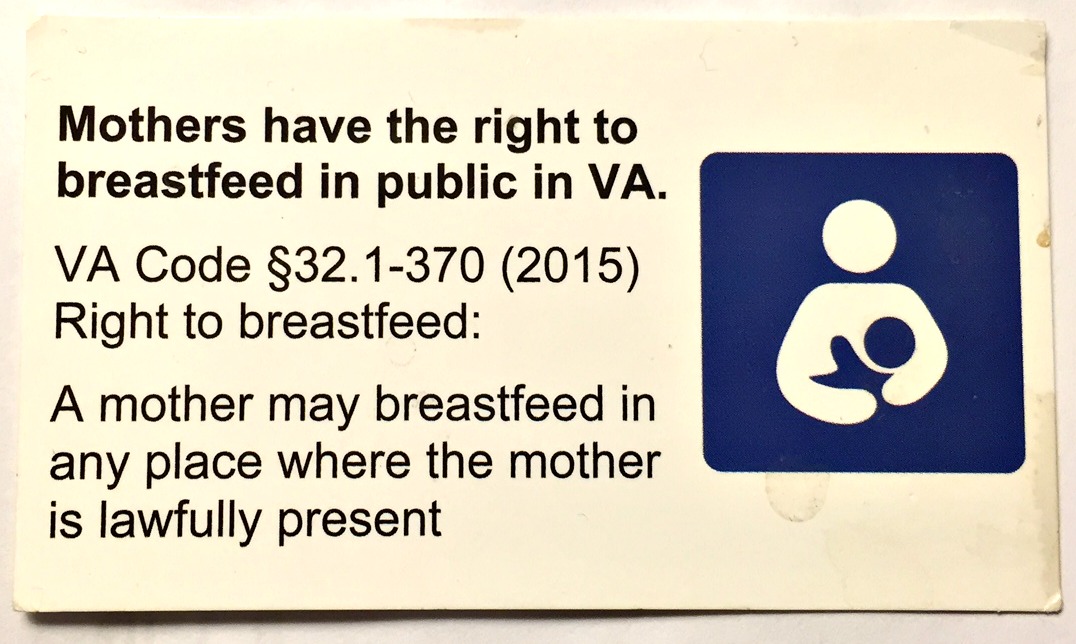
It was just a card, but I was riveted! “Wow, someone has my back!” I thought. The laminated business card glinted in the dappled sunlight under Virginia pines in Newport News Public Park where thirty mothers gathered to share their support for “natural” living issues, like full-term breastfeeding.
Through the haze of new-mom-breastfeeding-oxytocin (the love hormone), I watched the mothers who had become my life raft eagerly pass the stack of shiny cards while comfortably nursing babies in a flurry of toddlers plopping onto laps and nursing in between trips to the playground.
It was 1999 and Jamie Grumet, Time magazine’s iconic breastfeeding cover-mom in 2012, was a 12 year-old middle schooler and mobile devices had yet to saturate parents with conflicting research while offering support and ridicule for breastfeeding.
Inspired by the official-looking tool for activism, I worked with my mother’s support group to distribute the message to new moms who, like me, lit up at the “Get-Out-of-the-Public-Toilet-for-Free” pass. We carried the cards into community businesses and asked owners to post them in prominent places to help spread the word. One cafe owner said she promised to point to the card on her community bulletin board if a patron complained.
Today, my baby drives away and forgets to wave, but through volunteer work with the Virginia Breastfeeding Task Force, VABFTF, I can still experience the warm fuzzies of those first days of becoming a sling-wearing lactivist. It’s those warm fuzzies – ancient oxytocin neural net imprints – that get me through the rose-colored-glasses-cracking-reality of breastfeeding in Virginia.
“I thought that card meant I was protected,” I confessed this past year to Nancy Raines, RN, VABFTF’s chairperson. “You were impressionable, weren’t you?” she smiled sympathetically. Apparently, thanks to one of many benefits of breastfeeding for mothers, the whole world sparkled back then, not just the little blue card announcing Virginia’s promise not to arrest breastfeeding mothers for indecent exposure.
Unlike the old law that equated the nurturing act of nursing a baby in public with the criminal act of indecent exposure and a patronizing offer to not arrest mothers, Virginia’s new law, taking effect July 1, 2015, unequivocally provides protection to breastfeeding mothers whenever they have the right to be present in public. Virginia families have cause to celebrate, but how far will the law go to transform a culture whose hospitals, 88 out of 90, do not meet the WHO-UN’s Baby-Friendly Initiative certification, whose employers are not required to support pumping for nursing mothers, and whose overall record on women’s rights is a butt of late night television hosts?
Opening The Door To Cultural Change: Virginia’s New Breastfeeding Bill
How needed is Virginia’s new bill? Consider that the Unites States ranks at the bottom of all developed countries on the Breastfeeding Policy Scorecard for Developed Countries and of its 50 states, only three do not protect mothers and babies breastfeeding in public spaces. According to these official rankings, there are few places in the industrialized world less welcoming to nursing mothers and children than the Old Dominion. (See the full list here.)
Why does it matter for Virginians if their mothers’ rights to breastfeed are protected? Socially unsupported mothers are less likely to breastfed, which means Virginia families are more likely to miss out on the scientifically acknowledged, lifelong benefits of breastfeeding than their counterparts in more progressive countries and states. The “common wealth” of Virginia could be its families’ common health if the science were translated into cultural norms:
“In 2007, the Agency for Healthcare Research and Quality (AHRQ) published a summary of systematic reviews and meta analyses on breastfeeding and maternal and infant health outcomes in developed countries. The AHRQ report reaffirmed the health benefits of breastfeeding and the health risks associated with formula feeding and early weaning from breastfeeding. Infants who are not breastfed experience more episodes of diarrhea, ear infections, and lower respiratory tract infections and are at higher risk of sudden infant death syndrome, diabetes, and obesity. Breastfeeding also helps protect mothers from breast and ovarian cancer.” CDC Guide to Supporting Breastfeeding Mothers and Babies
A 2010 study published in the journal Pediatrics found that IF 90% of American families followed guidelines to breastfeed exclusively for six months, the US would save $13 billion annually from reduced direct medical and indirect costs and the cost of premature death.
That Virginia’s current law, passed in 1994, equates public breastfeeding with an act of “indecent exposure” and only promises “not to arrest” mothers says everything you need to know about Virginia breastfeeding culture. In a recent newspaper article, one Virginia legislator’s spokesman interpreted the law as “forbidding” public breastfeeding. The openly hostile comments under the newspaper article provide a revealing sampling of Virginia attitudes toward breastfeeding mothers and babies.
A pandering oddity at best, Virginia’s second breastfeeding law, passed in 2002, offers protection for nursing mothers only on state-owned property, meaning, mothers are welcome to nurse on a stump in a state park or a bench on capitol grounds across from a restaurant. Two additional Virginia laws allow a breastfeeding mother to be exempt from jury duty and “encourages employers to recognize the benefits of breastfeeding and to provide unpaid break time and appropriate space for employees to breastfeed or express milk.”
But Virginia’s breastfeeding attitudes may be changing – or in for a change.
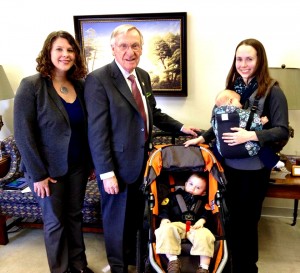
On February 3, 2015, the new bill protecting mothers breastfeeding publicly passed through Virginia General Assembly’s House of Representative’s Health, Welfare and Institutions Committee unanimously. The bill passed Virginia’s Senate Courts of Justice Committee unanimously on February 5. Virginia governor’s office communications director, Brian Coy, says “The governor intends to sign this bill” in March. The new law would become effective July 1, 2015.
Kate Noon, a Richmond mother and activist, began the process of working with a state legislator in September 2014, and within an impressively short timeframe, teamed up with Northern Virginia mothers and legislators to shepherd the new bill through a complex public hearing and approval process.
“Women are discriminated against more often than you think while in restaurants or other places of business. So, we really needed to get a law on the books to protect families,” said Noon in a recorded interview you can download here.
Activist Rebecca Geller, comments, “As a mom of three and a business owner, I appreciate the tremendous impact this law would have on women and families across the Commonwealth. I’m thankful for the legislators who have introduced this bill and urge the full House and Senate to vote this bill into law during the 2015 legislative session. It is critical that Virginia moms know that state law is on their side to encourage breastfeeding to cultivate healthy children and healthy families.”
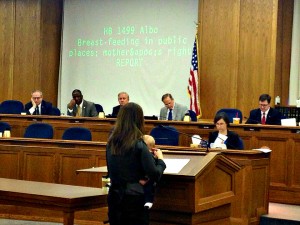
Testifying at this week’s Courts of Justice Senate Committee hearing was Jill DeLorenzo, an Ashburn, VA, mother who was asked to cover up or go to the locker room of Gold’s Gym. In an emailed response to DeLorenzo’s complaint, a Gold’s Gym representative cited Virginia’s lack of a law to protect breastfeeding mothers.
“If this new law had been in place, this would not have happened,” said DeLorenzo in a phone interview. “In the future, people will not be able to force their views on mothers who are breastfeeding.” (Watch DeLorenzo’s video below.)
The new bill has garnered support from the Virginia Department of Health, American Academy of Pediatrics, American College of Nurse Midwives, March of Dimes, Virginia Chapter, American Civil Liberties Union, National Organization for Women, Virginia Chapter, Women Matter and Virginia Governor Terry McAuliffe.
“We are thrilled to support HB 1499 and SB 1427,” said the Virginia Chapter of the American Academy of Pediatrics, AAP, in a statement. “Virginia is one of only three states that does not have a law to protect a mother’s right to breastfeed in public. The AAP recommends that babies breastfeed for at least a year, with only mother’s milk for the first six months. However, in Virginia, only one-quarter of women are able to reach those goals despite over 80 percent citing breastfeeding as their plan at birth. We strongly support removing barriers to help more women breastfeed their babies for longer.”
The proposed bills are “common sense legislation” says Noon, “that would bring Virginia in-line with the norms around the rest of the country.”
To help promote new bill’s passage into law, Noon says, “Everyone should contact their state Delegate and Senator and ask them to vote in favor of HB1499 and SB1427. Supporters can also join our Facebook, VA Alliance for Breastfeeding Laws, for updates on our progress and information how to help make this a reality.”
Of the dozens of breastfeeding mothers who responded to my internet request for their opinions on the new bill, all of them shared a collective sigh of relief:
“Breastfeeding in public, in our country, should be part of the norm. Mothers should have the right to nurse their child no matter where they are and feel completely comfortable and protected,” said Poquoson, VA, mom, Christy Hinson-Holloway. “It’s encouraging to know that as a breastfeeding mom myself, that our state is taking a stand to support this. Perhaps someday soon breastfeeding in public will no longer be taboo in our country and moms will feel encouraged rather than discouraged.”
Virginia’s Cultural Obstacle #1: Respect for Women’s Rights
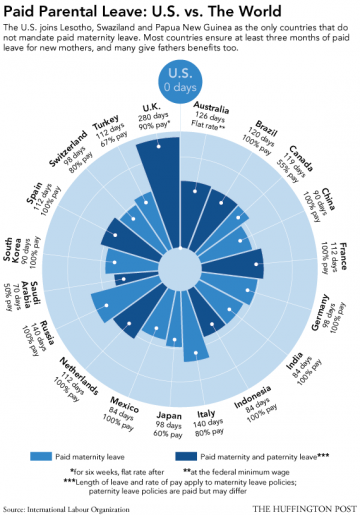 If Virginia’s bill becomes law, will it emboldened mothers to breastfeed openly in a state that notoriously violates women’s rights to the glee of late night shows and bloggers, and boasts a formula industry dominated hospital culture with only two World Health Organization, WHO, recommended Baby-Friendly hospitals, an initiative that promotes early and sustained breastfeeding?
If Virginia’s bill becomes law, will it emboldened mothers to breastfeed openly in a state that notoriously violates women’s rights to the glee of late night shows and bloggers, and boasts a formula industry dominated hospital culture with only two World Health Organization, WHO, recommended Baby-Friendly hospitals, an initiative that promotes early and sustained breastfeeding?
The Save the Children’s 2012 State of the World’s Mothers Report, as well as the US Surgeon General’s Call-to-Action confirm that it is the ubiquitous, invisible force of culture reflecting in our community’s attitudes and actions that determines a mother’s breastfeeding success, a child’s lifetime of health benefits and billions of dollars in healthcare saved. The US Surgeon’s Call to Action specifically identifies barriers to breastfeeding as lack of knowledge, poor family and social support, social norms, health services lack of support, embarrassment due to cultural sexualization of breasts, and lack of family leave/employment/childcare support. (The US is the only developed country without paid parental leave. See the graphic to the right.)
At the core of these key barriers is an individual, community or institution’s scientifically indefensible mental mindset against breastfeeding that collectively form the formidable culture a new mother finds herself immersed in whether in a hospital, restaurant, gym, internet or family gathering.
If the science of breastfeeding alone were enough to foster a normative breastfeeding culture, Virginia and the United States would have created healthier families two generations ago. But it is uneducated cultural attitudes spawning a lack of social support that prevent progress now and for future generations. As the State of the World’s Mothers Report states:
“Most mothers want to breastfeed. Breastfeeding initiation rates are high, but breastfeeding drops off rapidly in the early weeks after birth. This happens, not because mothers don’t want to breastfeed anymore, but because they haven’t received the support they need to continue. Breastfeeding is natural, but it is also something that requires community support.”
A Virginia resident since birth, I am proud of my historical commonwealth for many reasons, but I am also consigned to hanging my head when Virginia is used as the butt of late night television shows for its often stunning violations of women’s rights.

In 2010, Virginia’s attorney general proposed to cover the exposed breast of the Roman goddess, Virtus, on the state seal and flag. The elected official went so far as to create his own “more virtuous” version of the Roman goddess from political action committee funds. Never mind that the seal, designed by Declaration of Independence signer, George Wythe, is considered classical art.
In 2012, Virginia’s governor supported an invasive, mandatory, transvaginal ultrasound bill for women considering a legal abortion. (The same former governor was convicted on 11 counts of corruption in September 2014.) Saturday Night Live comedian, Amy Poehler, declared on Weekend Update’s “Really?” skit she loved to “fly transvaginal airlines!” See the viral giph generated by the skit below.
With Virginia’s male, elected officials using their power to cover the exposed breast of a Roman goddess and shove through a vagina violating law as a condition for a legal abortion, it is not surprising that Virginia is only now considering protecting its breastfeeding mothers in public spaces, an action that states like New York have considered on par with civil rights for 20 years.

Virginia’s Cultural Obstacle #2: Hospitals
Unlike its ranking as only one of three states not offering legal protection for publicly breastfeeding mothers, Virginia isn’t the only state whose hospitals are reluctant to follow CDC and WHO recommendations for the adoption of the Baby-Friendly Hospital Initiative’s Ten Steps to Successful Breastfeeding. CDC states that “most US hospitals do not fully support breastfeeding” and “Hospitals should do more to help mothers start and continue breastfeeding.” It is the formula-company dominated hospital culture that the CDC recommends discarding in favor of the Baby-Friendly Hospital Initiative.
The Ten Steps to Successful Breastfeeding were developed by a team of global experts and consist of evidence-based practices that have been shown to increase breastfeeding initiation and duration. Baby-Friendly hospitals and birthing facilities must adhere to the Ten Steps to receive, and retain, a Baby-Friendly designation. Currently, 10.73% of US births occur in Baby-Friendly designated facilities. Less than half of one percent of Virginia babies are born in Baby-Friendly hospitals, according to the CDC Breastfeeding Scorecard for 2014.
While Virginia comes in at a mid-level ranking in the CDC’s Breastfeeding Scorecard, the state can only point to two hospitals with a Baby-Friendly Hospital certification. Currently, there is a state-wide rush for Virginia hospitals to become certified as more states, including Virginia’s neighboring Maryland, move the certification to the top of their public health priorities.

SOURCE: CDC National Survey of Maternity Practices in Infant Nutrition and Care (mPINC)
Over the past two years, I have talked with a number of Virginia hospital workers who shared their experiences and insight into their workplace culture. For hospital administrators, embracing the Baby-Friendly Initiative can mean letting go of formula company dollars that fund required continuing education credit level staff training, and until recent years, supplied mothers with welcome bags stuffed with free formula samples – a marketing tactic known to undermine the intentions of the most committed breastfeeding moms.
One lactation consultant described attending a formula company sponsored, required hospital training with a flown-in speaker to discuss probiotics in mother’s milk:
“They aren’t supposed to mention formula or give out free goodies anymore, but at the end of the talk, the speaker did say, ‘Oh, by the way, the new formula products have probiotics added.”
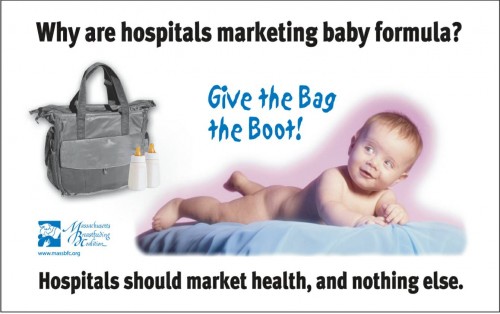
Another Richmond hospital lactation consultant shared the national Ban the Bags campaigns, intended to squash free formula products marketing tactics that undermine a mother’s breastfeeding choices, have found a conflicted reception:
“Our public relations staff won’t advertise their support of the program because they don’t want moms who want their free goodies protesting outside or choosing to go to a different hospital where they think they will feel less pressured to breastfeed.”
At the annual More Than LATCH conference in Virginia Beach in 2013, I asked a university professor if she knew of this practice. Glenda Adams, MSN, RNC, WHNP, IBCLC, an assistant professor of lactation at the University of Louisville, Kentucky, shared with me in a video interview that hospitals using formula companies to train staff for continuing education credits in breastfeeding practices was “common but waning”. (Watch Adams talk about a hospital lactation consultant’s perception of Ban the Bags, the formula dominated culture of hospitals, and how parents need to be prepared prenatally to have breastfeeding support from a lactation consultant ready.)
A Norfolk hospital pediatrician, passionate about breastfeeding and transforming hospital culture from within, shared her hospital’s obstacles to supporting mothers and breastfeeding:
“It is taboo to talk to a mom about whether they are breastfeeding or not. It is a loaded question, as if you are asking people if they have accepted Jesus into their hearts or not. The patients are going to need to demand it before things change. The patients need to come in saying they want to breastfeed. In the midwifery center here, the patients come in knowing what they want and how to ask for help. Otherwise, when the nurse gives up, they just give the baby a bottle. I hate for people to be unsuccessful if they don’t know.”
The physician went on to say that while her hospital has experienced some success in moving toward a Baby-Friendly certification, “When the notice came down from on high that the mother and baby are one unit and a nurse cares for both instead of taking the baby to the nursery, according to the Ten Steps, you’d have thought we were trying to burn the building down. But now people get it and it is working.”
Why is hospital culture crucial to successful breastfeeding? Because hospitals offer new mothers a first encounter with a supportive or unsupportive breastfeeding culture that could set the bar for her expectations for support. As the physician above advises, until more Virginia hospitals embrace the Baby-Friendly Initiative’s guidelines for creating breastfeeding friendly cultures, Virginia families will need to BYOBS, bring your own breastfeeding support into hospitals.
Find a Virginia Baby-Friendly hospital here.
Local Communities And Grassroots Activism: Where Cultural Change Is Made
How set up for breastfeeding failure are families in American culture at-large? Even though low rates of breastfeeding add $13 billion to medical costs yearly, the US ranks last among all developed countries, according to the international Breastfeeding Policy Scorecard. In 2012, the venerable State of the World’s Mothers Report defined the US breastfeeding problem:
The United States ranks last on the Breastfeeding Policy Scorecard. It is the only economically advanced country – and one of just a handful of countries worldwide – where employers are not required to provide any paid maternity leave after a woman gives birth. There is also no paid parental leave required by U.S. law. Mothers may take breaks from work to nurse, but employers are not required to pay them for this time. Only 2 percent of hospitals in the United States have been certified as “baby-friendly” and none of the provisions of the International Code of Marketing of Breast-milk Substitutes has been enacted into law. While 75 percent of American babies are initially breastfed, only 35 percent are being breastfed exclusively at 3 months.
The National Alliance for Breastfeeding Advocacy, NABA, considers breastfeeding in the United States an endangered practice. “Mothers meet numerous cultural, institutional, and commercial barriers to both initiation and continuation of optimal breastfeeding,” states NABA’s website.
In search of who is exploring strategies for transforming Virginia and America’s cultural breastfeeding attitudes, I attended the United States Breastfeeding Committee’s annual conference as an elected representative of the VABFTF in August 2014. In Arlington, VA, I joined more than 340 attendees from 48 states, as well as several US territories and Indian Tribal Organizations (ITOs), at the Fifth National Breastfeeding Coalitions Conference.
The USBC is very special among breastfeeding organizations because of its thoughtful and intentional three-year long research-informed creation in response to a genuine, national need for coordinated breastfeeding efforts. The title of the USBC’s fifth conference expressed their intentions and strategy: Transforming Barriers into Bridges: Cultivate Your Community Leadership.
Why is the work of state and local coalitions crucial to the breastfeeding movement in America? Because, as the USBC conference co-chair and Kansas Breastfeeding Coalition representative, Brenda Bandy explained in an interview, “Local communities are the only place any real change is made.”
“I am a big fan of driving all over this state and meeting these local champions face to face. I find my local champions and then I connect resources to their efforts. This is what the United States Breastfeeding Committee is doing for the state coalitions at the conference. We are doing this on a state level,” said Bandy, who is also an USBC board member.
“USBC was thrilled to convene this unique event once again: the only breastfeeding conference focused on the power of engaging partnerships across all sectors of society to build a strong circle of breastfeeding support. This year’s theme—Transforming Barriers into Bridges: Cultivate Your Community Leadership—focused on developing coalitions’ capacity and commitment to equity and inclusion in breastfeeding support, a fundamental organizational priority for USBC,” said Megan Renner, USBC executive director.
Diversity In Communities = Diversity in Strategies
During and between the USBC conference sessions, the cultural change challenge was considered in earnest with one given variable: while the breastfeeding message is universal, individual communities are not. Eighty-nine USBC speakers shared stories that highlighted the diversity found in local communities:
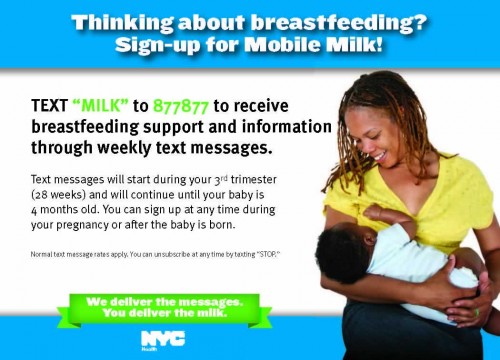
The American Samoa Breastfeeding Coalition’s representative shared her experience in advocating for breastfeeding in a traditional, village culture. She not only found support for her ideas, her group succeeded in educating ambulance drivers carrying mothers from the field to local hospitals to achieve skin-to-skin contact, decreasing the number of infant deaths dramatically.
In New York City, a Mobile Milk texting campaign took advantage of the fact that 82% of texts are read within 15 minutes to “close the gap between prenatal and inpatient support and the early postpartum period”. The program’s “helpful tips and words of encouragement” has reached 1,200 NYC moms since its implementation in October 2013.
Stranded in a wheelchair with a broken leg at this year’s conference meant, instead of flitting about the vendor tables between sessions, I stayed parked at my table chatting with women around me. In a glorious moment of women-on-a-mission magic, the Michigan, Colorado, Nashville, Kansas and Los Angeles coalition representatives circled near the ten top table to share their insights.
Tammy Lantz, the Colorado Breastfeeding Coalition representative noted, “Those aren’t just literal mountains separating communities in our state; they are figurative as well. All of our communities are different and need to have their own local coalitions.”
Bandy shared her strategy for using a formal nonprofit structure to gather up the growing number of community coalitions in Kansas.
All of us wondered what it would be like to live in a more supportive village community like the Samoan representatives described.
I shared VABFTF’s plan for meeting Virginian’s where they are – sitting in traffic – with a “Building Bonds for Life” message alongside the international lactation symbol on the task force’s proposed vehicle license’s plate.
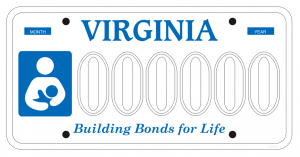
“So how do we do this?” I asked Shannon Polk, a seasoned attorney who brings her professional skill set to the Michigan Breastfeeding Coalition through a successful, grant-winning, nonprofit format. “Should we just go out there as on-fire, local activist moms or should we take the time to learn the ins and outs of the complex, formal, nonprofit world?”
Julie Hamilton, the Nashville Breastfeeding Coalition rep who presented her Beyond the Sticker poster campaign that morning, hollered (I can say that as a fellow Southerner) from the next table over, “I’m with you! Moms on fire!”
A part of me, the part that is weary from the restrictions of the nonprofit world, wondered aloud to Polk, “Is a formal structure necessary to achieve our goals? Alternatively, how will local coalitions qualify for funding for projects without a 501c3 designation that could take years and thousands of dollars to secure? Who is going to hang in there that long to see that process through to the end? Busy parents?”
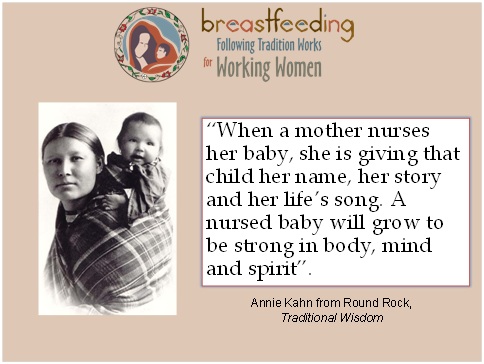
How Do You Fund A Cultural Revolution?
Polk, who was gracious in answering my questions during a round table discussion, expanded on her own activist weariness and legal insights into funding a revolution:
“We’re now at the point of finding out how to be amazing activists and nonprofit leaders and effective with change. This question reminds me of the Ferguson thing. I don’t want to sit at another table and eat another chicken dinner or have another protest. I want change. I am in my forties and I want change. Effective change,” said Polk.
Polk said she believes, “The breastfeeding movement has to move to a more mature level to make change in the lives of mothers and fathers as well as people who do not have children, because this is a public policy issue. It is important that we resource the movement, that we provide resources and money. We need institutional and structural change.”
“At some point you realize you are not an island and you have linked fates. You may not share the same views as someone else, but you realize this is a working mom issue and a fresh food issue and you link arms with everyone. Are you going to let me provide fresh first food to my baby when I am in here buying produce? You begin to see the interconnectedness. It is a public policy issue that involves everyone,” said Polk.
Grants, donations and other forms of official funding are usually not awarded to individuals, but formally recognized nonprofits. Remember those shiny, little blue cards created by the VABFTF in 1999? Donations, including some state monies, funded the creation, printing and distribution of those effective little announcement cards. According to Bandy, the first step to accepting crucial funding through a formal nonprofit from donors is to “define the word coalition”. Coalitions are usually independent, informal nonprofits, begun and maintained by on-fire mommas. None of the local or state coalitions attending the USBC conference are government organizations. Everyone I met was an unpaid volunteer.
“You get three people talking about breastfeeding you don’t have to call them a coalition,” said Bandy. “Again, we recognize that the work is only going to get done on the local level and the state function is to identify and empower the local leader. We are a cleaning house of information and connection for local groups. This is what the USBC does for the states and that is what we’re doing for local groups. What will sustain us is building these local leaders.”
The USBC continues these discussions with state and local coalitions on monthly teleconferences. The challenge of connecting the on-fire momma passions of local activists with seasoned state nonprofit volunteers to score funding for desperately needed change-making tools is ongoing, and frankly, mind-blowing considering the ease and efficiency formula companies are afforded in dominating hospital culture and spending millions targeting the same mothers.
Making Breastfeeding The Cultural Norm In Virginia, And Everywhere
After July 1, 2015, will a new breastfeeding law allow families to jump the entrenched and complex cultural hurdles in Virginia?
If Virginia’s new breastfeeding bill passes into law it will open doors for cultural transformation, but it will be Virginia families – who have not experienced a supportive culture – who will need to imagine the culture of support enjoyed by families in other developed countries and states and commit to creating that supportive culture in Virginia.
It will be Virginia families who meet the hostile internet commenter in restaurants, declare to the over-worked hospital staff their non-negotiable intentions to breastfeed and prepare to become gentle but determined educators through their now legally protected right to normalize breastfeeding by example – publicly.
Virginia families who take up the cause of Making Breastfeeding the Cultural Norm will need to understand the true nature of the cultural obstacles they face and the time it will take to make lasting change. Perhaps, with luck, their grandchildren will experience the supportive breastfeeding culture and lifelong benefits of breastfeeding they can now only imagine.
The good news is, there are women fashioning their local life rafts of support into battle ships with sophisticated strategies for transforming America’s culture right now, and Virginia families are welcome to join them.
Editor’s Post Script: In September of 2015, Virginia introduced its own version of the Baby-Friendly Hospital Initiative to help its hospitals move toward the WHO-UN designated certification. Five more Virginia hospitals became Baby-Friendly certified in 2015. Inspired by this story, the Virginia Alliance for Breastfeeding Laws created a laminated business card for mothers featuring the new law (see the card at the top of the page. And in 2016, more breastfeeding legislation to protect mothers in workplaces was introduced.
Resources
yourcialisrx.com/cialis_jelly.html
cialisnextdaydeliveryusa.com


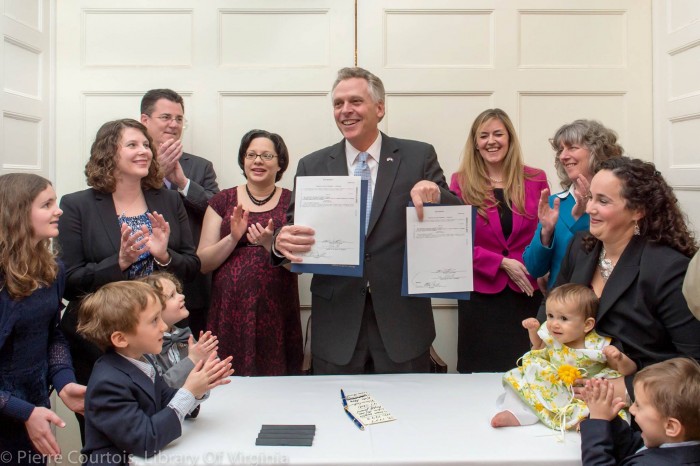
Thank you for this wonderful article Lisa! I am so happy to share it!
Thank YOU, Cindy!